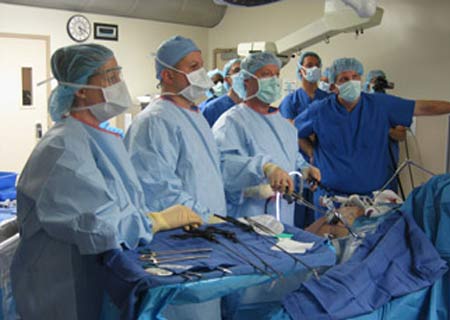While most of us know about the gastric banding and bypass weight loss operations, there’s another one in the rat race already. Scientists from the UC San Diego Health System have put forth a new obesity surgery that involves folding the stomach into a more compact and smaller size.
One of the major highlights of this method is its minimally invasive procedure. This kind of surgery could be an option for people who are above 30 kilos overweight. Termed as gastric placation, the stomach of the patient in question is folded into a new functional form, which the scientists compare to the art of origami. This mechanism for weight loss is apparently reversible and is conducted laparoscopically.
“This minimally invasive surgery is a new choice for patients who are more than 30 pounds overweight. By folding the stomach, we can reduce the volume by 70 percent. Patients can expect to lose up to 2 pounds per week following the procedure,†commented Santiago Horgan, director of the UC San Diego Bariatric Metabolic Institute.
In a span of 1 hour, patients receive about 1 to 5 incisions in the abdomen so that the folds can be placed onto the stomach. As per the size of the individual’s stomach, almost 1 or 2 folds are made with non-absorbable sutures. Due to the smaller stomach size post surgery, the appetite of the patients is repressed considerably, however they can continue with their normal eating habits. This is because their anatomy is not restructured in any manner.
Moreover, the stomach can be brought back to its original size if the situation demands so. Notably, subjects also reported of benefits related to blood pressure, depression and diabetes. These long-term effects could be the result of surgery, healthy diet and exercise. The gastric placation procedure necessitates hospitalization for 1 to 2 days followed by normal routine in almost a week’s time.
To be applicable for gastric placation, candidates are supposed to have a minimum BMI of 27.

